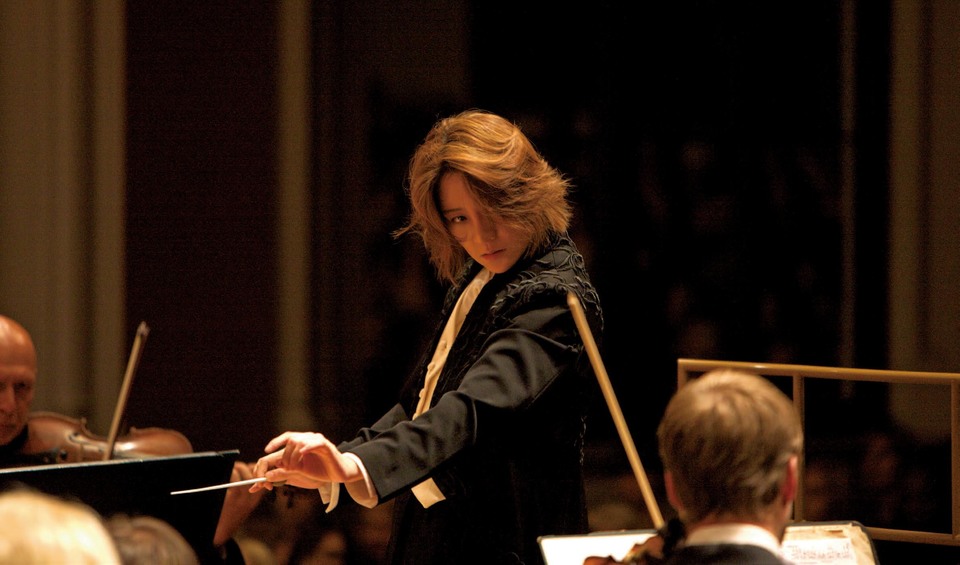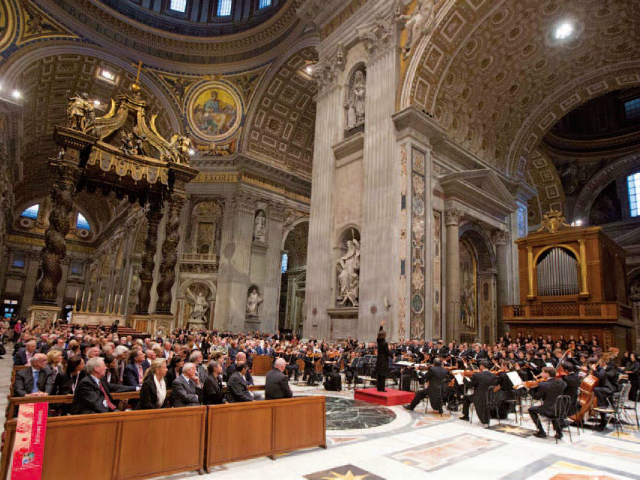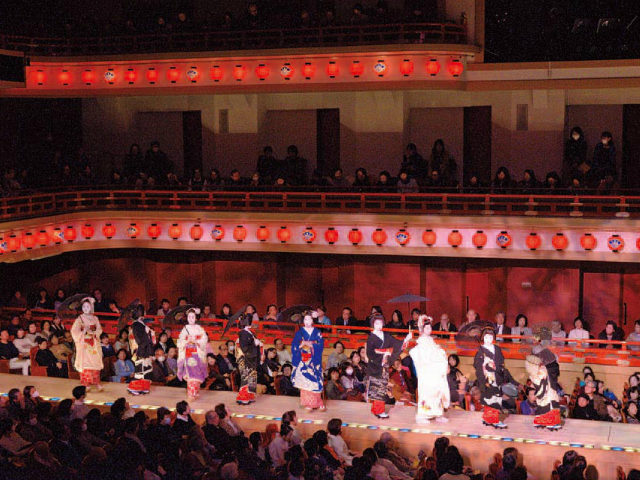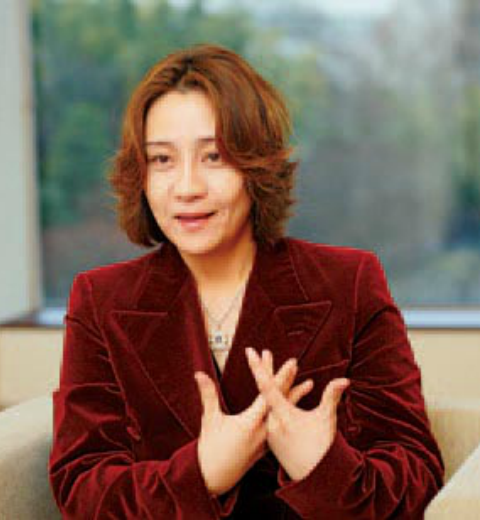Internationally active conductor Tomomi Nishimoto studied classical music from an early age under the influence of her mother, a music school graduate. Growing up close to the music world, she knew firsthand how tough it was to become a professional, but when she was in high school, she decided to pursue a musical career.
One day, she went hiking in the mountains among the fresh greenery of early summer. “The light and shadows and the interwoven patterns of the trees were so beautiful, they moved me to tears. I felt then that no artificial beauty could compete with that of nature. I would have painted a picture of it if I had had that sort of talent; instead I thought that I’d like to express the scene with the sounds closest to reality.”
Tomomi Nishimoto conducts. “Simply wielding a baton is not enough; a conductor must structure and show the direction for the performance, turning everyone’s ideals into a whole.” (Photo by Hideki Shiozawa)
After studying composition at a Japanese music school, she traveled to Russia, where she studied under Ilya Musin. “He gave passionate instruction without regard to nationality, gender, or age. I wasn’t able to speak Russian when I arrived there, but he taught me: ‘Don’t think of it as a negative. Acquire a power of expression that can communicate without using words.’ And he encouraged me to apply the strengths I’d gained from studying composition.” Nishimoto mastered her mentor’s lessons brilliantly. After performing mainly in Europe with various symphony orchestras and at opera houses, in 2010–11 she became the first foreign principal guest conductor of the State Academic Symphony Orchestra of Russia.
There are still few Asian or female conductors in the classical music world. But that has not stopped Nishimoto. In 2012, she formed the IlluminArt, a group with no home base that changes its format to match the venue and program, and became its artistic director and principal conductor. Nationality, race, religion, gender, and age are not criteria for membership in the group. “The important factors are appeal, talent, and capability,” she explains.
Nishimoto does not remain within the bounds of classical music; she also conducts in performances of new types, such as collaborative work with video creators. She has also become involved in various presentations of Japanese culture. When directing the opera Madame Butterfly in Japan, she incorporated kabuki staging, maiko (apprentice geisha) performers, and folk art elements. In 2015, she also served as an artistic director and conductor for Otobutai, an annual event featuring musical artists from East and West, when it was held at Sennyu-ji, a temple in Kyoto. Outside Japan, she has won critical acclaim for efforts to adapt concerts to the areas where they are held, such as by adding local folk instruments to the orchestra.
In November 2013, IlluminArt became the first Asian group to be invited to the International Festival of Sacred Music and Art in Rome. It won great applause for its performance of orasho (from the Latin oratio , “prayer”), Christian chants from Ikitsukijima Island in Nagasaki Prefecture. It was something of a homecoming for this music, which derives from Gregorian chant transmitted to Japan by Catholic missionaries in the sixteenth century and passed down orally from generation to generation by “hidden” Christians on the island after their faith was banned. At the same time, it was so old it had not previously been heard in the Vatican. Nishimoto’s skill and achievement in researching and reconstructing orasho were recognized as she became the first Asian and the youngest winner of an honorary award given by the organizers of the festival. And IlluminArt has been invited to perform at the festival every year since then.
Nishimoto says that one role art must play is to display what has been lost historically from various angles. She declares, “I want to continue restoring the magnificent work of our forebears and creating through the shared language of music.” The curtain will never fall on Nishimoto’s dreams.
Nishimoto’s IlluminArt Philharmonic performed liturgical music for Mass at St. Peter’s Basilica in Rome during the 2014 International Festival of Sacred Music and Art. The group has been invited to perform again in 2016. “It is an honor to be responsible for providing the music that is a key element of the Mass,” says Nishimoto.
Tomomi Nishimoto
Artistic director and chief conductor of IlluminArt Philharmonic Orchestra. The first foreigner to hold conducting posts in Russia, she has performed in around 20 countries as a conductor. In 2014, she became the first Asian to be invited twice to the International Festival of Sacred Music and Art in Rome and the youngest winner of an honorary award from the organizers in recognition of her talent and artistic skill. She has appeared at the festival since 2013 and has been invited again in 2016. Nishimoto was selected as a Young Global Leader by the World Economic Forum in 2007, and she completed Harvard Kennedy School’s executive education program in public leadership as a fully funded fellow in 2012.
Official website: http://www.tomomi-n.com/


































































































































